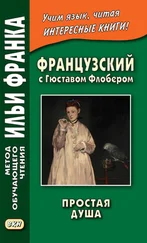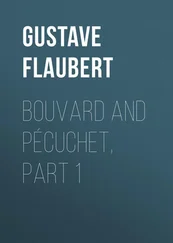"Victory, my dear associates! Unquestionably, it is a druidical bowl!"
However, let them be careful about the matter. The axe was doubtful; and as much for his sake as for their own, he pointed out a series of works to be consulted.
In a postscript, Larsoneur confessed his longing to have a look at this bowl, which opportunity would be afforded him in a few days, when he would be starting on a trip from Brittany.
Then Bouvard and Pécuchet plunged into Celtic archæology.
According to this science, the ancient Gauls, our ancestors, adored Kirk and Kron, Taranis Esus, Nelalemnia, Heaven and Earth, the Wind, the Waters, and, above all, the great Teutates, who is the Saturn of the Pagans; for Saturn, when he reigned in Phoenicia, wedded a nymph named Anobret, by whom he had a child called Jeüd. And Anobret presents the same traits as Sara; Jeüd was sacrificed (or near being so), like Isaac; therefore, Saturn is Abraham; whence the conclusion must be drawn that the religion of the Gauls had the same principles as that of the Jews.
Their society was very well organised. The first class of persons amongst them included the people, the nobility, and the king; the second, the jurisconsults; and in the third, the highest, were ranged, according to Taillepied, "the various kinds of philosophers," that is to say, the Druids or Saronides, themselves divided into Eubages, Bards, and Vates.
One section of them prophesied, another sang, while a third gave instruction in botany, medicine, history, and literature, in short, all the arts of their time.
Pythagoras and Plato were their pupils. They taught metaphysics to the Greeks, sorcery to the Persians, aruspicy to the Etruscans, and to the Romans the plating of copper and the traffic in hams.
But of this people, who ruled the ancient world, there remain only stones either isolated or in groups of three, or placed together so as to resemble a rude chamber, or forming enclosures.
Bouvard and Pécuchet, filled with enthusiasm, studied in succession the stone on the Post–farm at Ussy, the Coupled Stone at Quest, the Standing Stone near L'Aigle, and others besides.
All these blocks, of equal insignificance, speedily bored them; and one day, when they had just seen the menhir at Passais, they were about to return from it when their guide led them into a beech wood, which was blocked up with masses of granite, like pedestals or monstrous tortoises. The most remarkable of them is hollowed like a basin. One of its sides rises, and at the further end two channels run down to the ground; this must have been for the flowing of blood—impossible to doubt it! Chance does not make these things.
The roots of the trees were intertwined with these rugged pedestals. In the distance rose columns of fog like huge phantoms. It was easy to imagine under the leaves the priests in golden tiaras and white robes, and their human victims with arms bound behind their backs, and at the side of the bowl the Druidess watching the red stream, whilst around her the multitude yelled, to the accompaniment of cymbals and of trumpets made from the horns of the wild bull.
Immediately they decided on their plan. And one night, by the light of the moon, they took the road to the cemetery, stealing in like thieves, in the shadows of the houses. The shutters were fastened, and quiet reigned around every dwelling–place; not a dog barked.
Gorju accompanied them. They set to work. All that could be heard was the noise of stones knocking against the spade as it dug through the soil.
The vicinity of the dead was disagreeable to them. The church clock struck with a rattling sound, and the rosework on its tympanum looked like an eye espying a sacrilege. At last they carried off the bowl.
They came next morning to the cemetery to see the traces of the operation.
The abbé, who was taking the air at his door, begged of them to do him the honour of a visit, and, having introduced them into his breakfast–parlour, he gazed at them in a singular fashion.
In the middle of the sideboard, between the plates, was a soup–tureen decorated with yellow bouquets.
Pécuchet praised it, at a loss for something to say.
"It is old Rouen," returned the curé; "an heirloom. Amateurs set a high value on it—M. Marescot especially." As for him, thank God, he had no love of curiosities; and, as they appeared not to understand, he declared that he had seen them himself stealing the baptismal font.
The two archæologists were quite abashed. The article in question was not in actual use.
No matter! they should give it back.
No doubt! But, at least, let them be permitted to get a painter to make a drawing of it.
"Be it so, gentlemen."
"Between ourselves, is it not?" said Bouvard, "under the seal of confession."
The ecclesiastic, smiling, reassured them with a gesture.
It was not he whom they feared, but rather Larsoneur. When he would be passing through Chavignolles, he would feel a hankering after the bowl; and his chatterings might reach the ears of the Government. Out of prudence they kept it hidden in the bakehouse, then in the arbour, in the trunk, in a cupboard. Gorju was tired of dragging it about.
The possession of such a rare piece of furniture bound them the closer to the Celticism of Normandy.
Its sources were Egyptian. Séez, in the department of the Orne, is sometimes written Saïs, like the city of the Delta. The Gauls swore by the bull, an idea derived from the bull Apis. The Latin name of Bellocastes, which was that of the people of Bayeux, comes from Beli Casa, dwelling, sanctuary of Belus—Belus and Osiris, the same divinity!
"There is nothing," says Mangou de la Londe, "opposed to the idea that druidical monuments existed near Bayeux." "This country," adds M. Roussel, "is like the country in which the Egyptians built the temple of Jupiter Ammon."
So then there was a temple in which riches were shut up. All the Celtic monuments contain them.
"In 1715," relates Dom Martin, "one Sieur Heribel exhumed in the vicinity of Bayeux, several argil vases full of bones, and concluded (in accordance with tradition and authorities which had disappeared) that this place, a necropolis, was the Mount Faunus in which the Golden Calf is buried."
In the first place, where is Mount Faunus? The authors do not point it out. The natives know nothing about it. It would be necessary to devote themselves to excavations, and with that view they forwarded a petition to the prefect, to which they got no response.
Perhaps Mount Faunus had disappeared, and was not a hill but a barrow?
Several of them contain skeletons that have the position of the foetus in the mother's womb. This meant that for them the tomb was, as it were, a second gestation, preparing them for another life. Therefore the barrow symbolises the female organ, just as the raised stone is the male organ.
In fact, where menhirs are found, an obscene creed has persisted. Witness what took place at Guerande, at Chichebouche, at Croissic, at Livarot. In former times the towers, the pyramids, the wax tapers, the boundaries of roads, and even the trees had a phallic meaning. Bouvard and Pécuchet collected whipple–trees of carriages, legs of armchairs, bolts of cellars, apothecaries' pestles. When people came to see them they would ask, "What do you think that is like?" and then they would confide the secret. And, if anyone uttered an exclamation, they would shrug their shoulders in pity.
One evening as they were dreaming about the dogmas of the Druids, the abbé cautiously stole in.
Immediately they showed the museum, beginning with the church window; but they longed to reach the new compartment—that of the phallus. The ecclesiastic stopped them, considering the exhibition indecent. He came to demand back his baptismal font.
Читать дальше
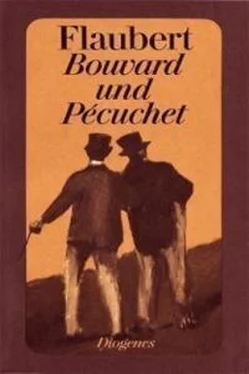
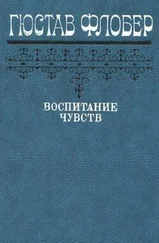

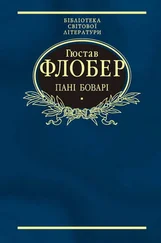
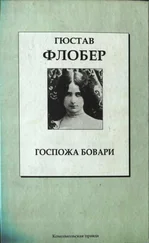
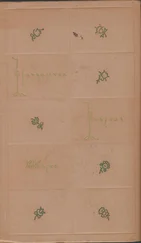
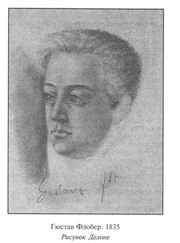
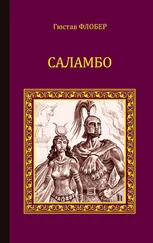
![Гюстав Флобер - Закат Карфагена [Сборник]](/books/414440/gyustav-flober-zakat-karfagena-sbornik-thumb.webp)
